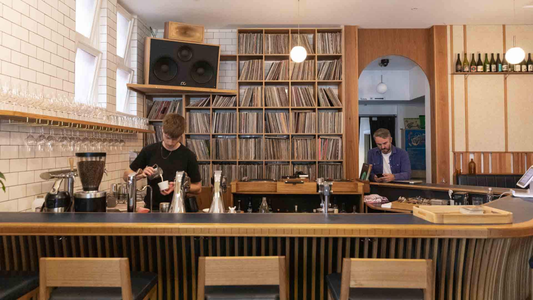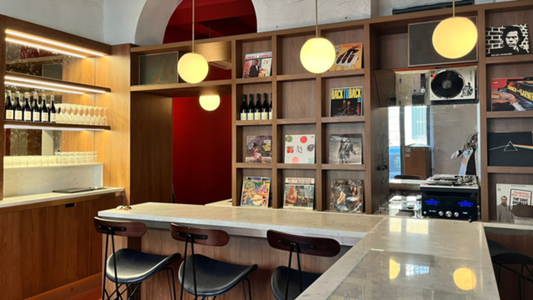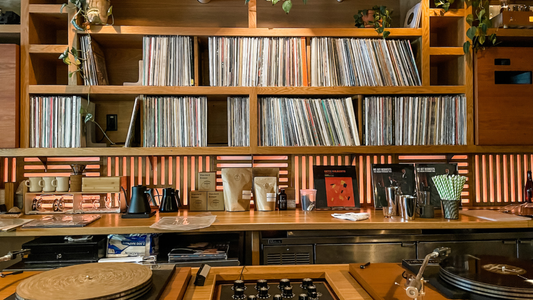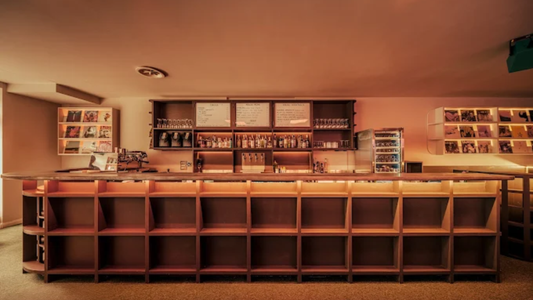
Textures That Listen
Why wood, wool, and stone make sound feel human.
By Rafi Mercer
Walk into any room that sounds good and you’ll notice it before you understand it. The air feels soft. The edges are kind. The sound has weight but no glare. That sensation doesn’t come from the speakers; it comes from the surfaces — from what the room is made of.
Texture, more than technology, decides whether a room listens back.
How materials shape the sound we feel:
- Wood — diffuses gently, adds warmth and organic tone.
- Fabric — softens reflection, lends intimacy.
- Stone — grounds bass, gives sound physical mass.
- Glass — adds brightness and clarity, but needs balance.
- Metal — carries resonance; used sparingly, it sharpens definition.
In Tokyo’s Studio Mule, oak and pine shape the sound as much as the amplifiers. In Kyoto’s JBS, worn wood floors absorb footsteps, letting the quiet hang between records. In New York’s Public Records, wool panels and velvet banquettes hold the air still. You could remove the furniture and still know how each place sounds — the textures themselves have tone.
Modern interiors often forget this. Hard floors, bare walls, exposed concrete: beautiful to the eye, hostile to the ear. Listening bars and homes that care about sound do something different. They layer — wool rugs over timber, linen curtains against plaster, bookshelves that double as acoustic diffusers. The room becomes a fabric, woven for resonance.
Texture shapes emotion too. Soft materials encourage proximity; they make people lower their voices. Hard, echoing rooms create distance. That’s why warmth in sound so often parallels warmth in touch — the two senses work in tandem.
The Japanese term shibui comes to mind: a kind of understated beauty that matures with wear. Old wood, faded cloth, the grain of use. These textures listen because they’ve already absorbed time. They remind us that sound, like life, thrives in imperfection.
At home, this doesn’t demand renovation. One thick rug, a wall of books, a heavy curtain — each is an acoustic gesture. Together they transform sound from something that plays in the room to something that belongs to it.
In the end, texture is empathy made visible. It absorbs, softens, and gives back. And perhaps that’s why rooms that listen feel more human: they understand how to respond.
Quick Questions
Why do natural materials sound better?
Because they diffuse and absorb in complex, organic ways, avoiding harsh reflections.
How can I add texture to a modern room?
Layer soft furnishings, rugs, and curtains — balance hard surfaces with tactile ones.
Does texture affect emotion?
Absolutely. The ear and the skin read comfort the same way: through softness, warmth, and depth.
Rafi Mercer writes about the spaces where music matters.
For more stories from Tracks & Tales, subscribe, or click here to read more.







